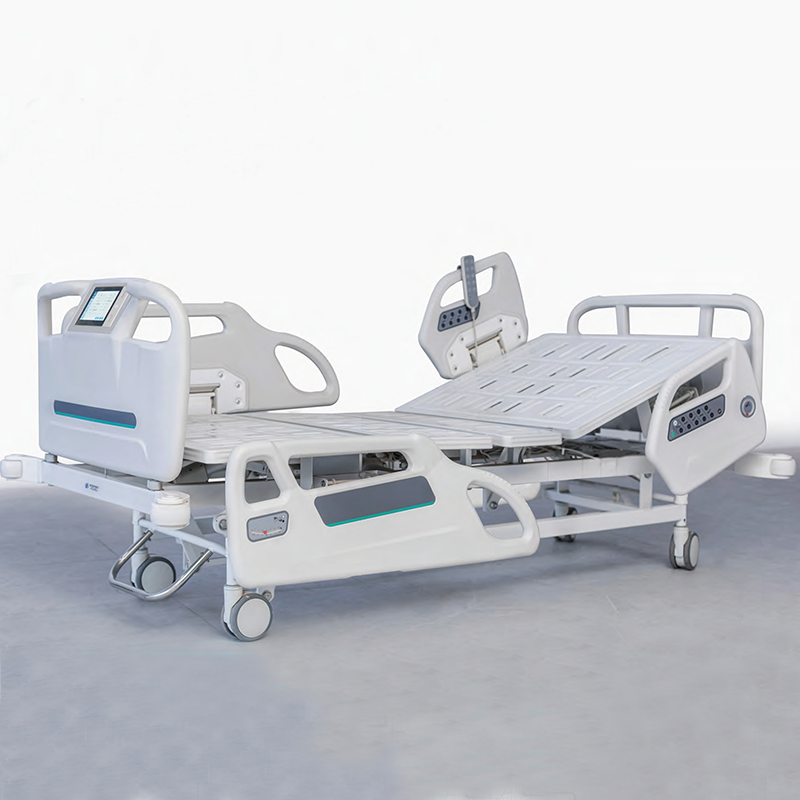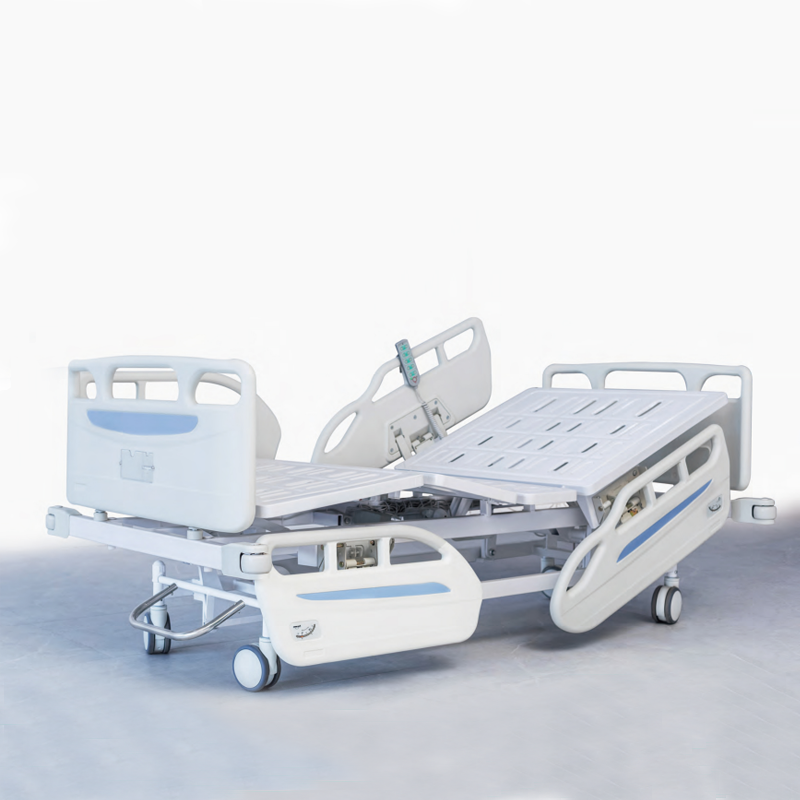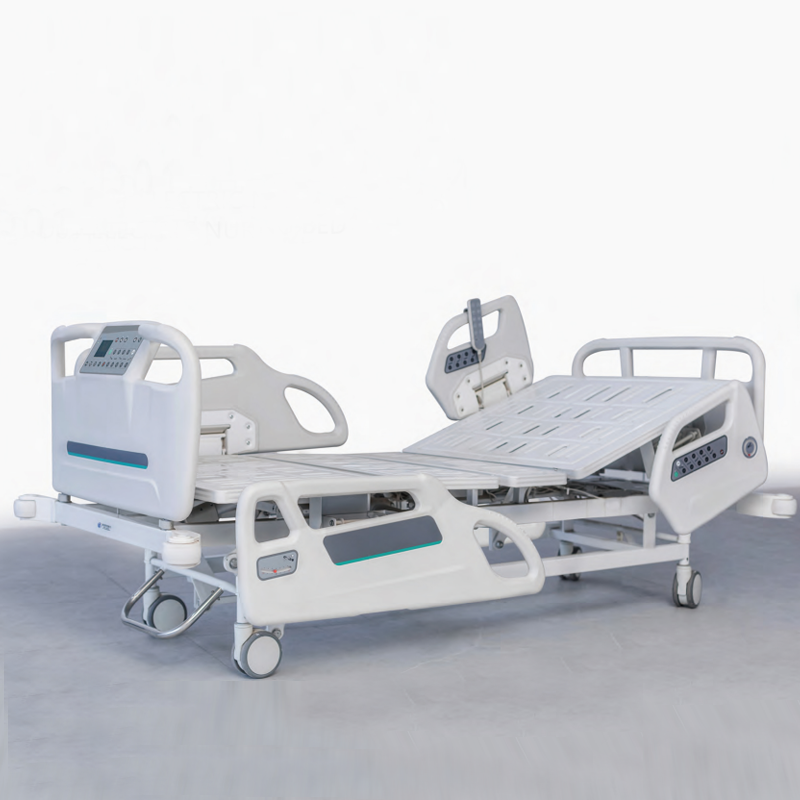An electric hospital bed configured for rehabilitation is a dynamic therapeutic tool designed to actively support the patient's recovery journey and reintegration of motor functions. Its electric adjustability is central to this role, allowing therapists and caregivers to precisely position the patient for various therapeutic exercises, mobility training, and functional activities. The ability to easily adjust the height is crucial for facilitating safe and biomechanically correct transfers to and from wheelchairs or standing frames, while the articulation of the backrest and knee break helps in gradual sitting tolerance training and positioning for specific therapies. The smooth, controlled movement of an electric bed is particularly beneficial for patients with pain or limited mobility, minimizing discomfort during repositioning. Features such as sturdy side rails provide necessary support for patients re learning bed mobility. By enabling optimal and frequent positioning, the electric rehabilitation bed helps prevent complications like muscle contractures and pressure sores, supports cardiovascular and respiratory function, and empowers patients to participate more actively in their own recovery process. It is an indispensable asset in rehabilitation hospitals, spinal injury units, and stroke recovery centers, directly contributing to improved functional outcomes and a more efficient therapeutic workflow.


